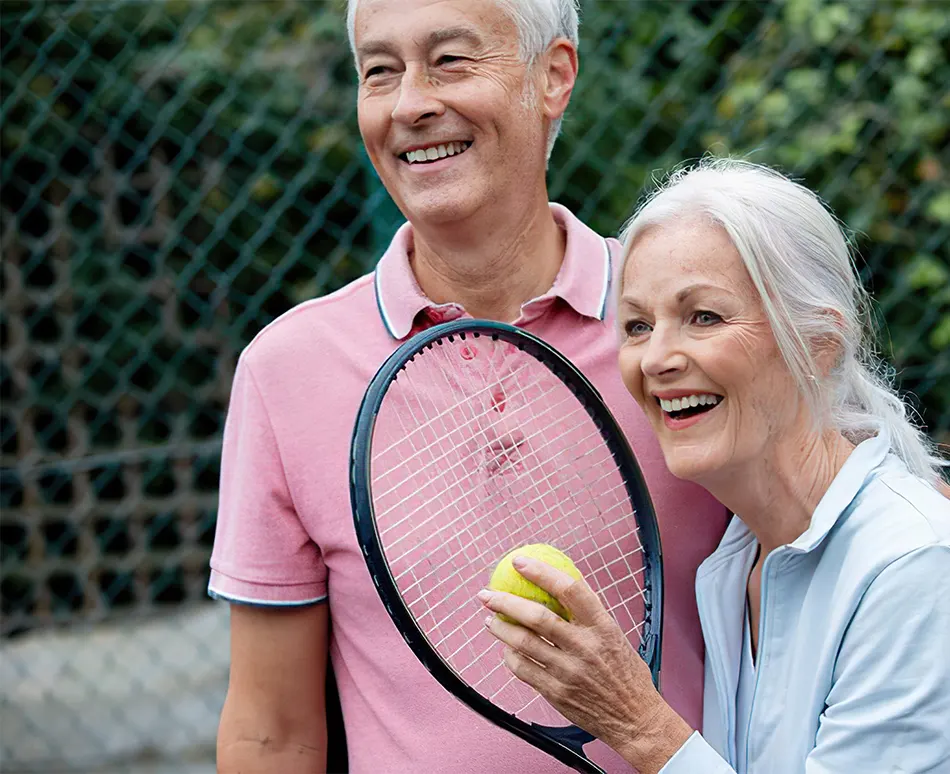Signals of aging by decade
Aging is a gradual process, and the signs of aging can start at different times for different individuals, influenced by genetics, lifestyle, environmental factors, and overall health.
- Decreased Muscle Mass and Strength: Gradual loss of muscle mass and strength may begin.
- Skin Aging: More visible signs of aging like wrinkles or age spots may start to appear.
- Metabolic Changes: Metabolism continues to slow down, making weight management more challenging.
- Fertility Changes: Fertility may start to decline, especially in women.
- Vision Changes: Issues like presbyopia (difficulty focusing on close objects) may arise.
- Decrease in Bone Density: Gradual loss of bone density can start, increasing the risk of fractures.
- Slower Metabolic Rate: Continued slowing of the metabolism.
- Hormonal Changes: Women may begin perimenopause, leading to symptoms like hot flashes and mood swings.
- Menopause: Women typically go through menopause, with the end of menstrual cycles and more pronounced hormonal changes.
- Increased Risk of Chronic Conditions: Risks for conditions like heart disease, diabetes, and osteoporosis rise.
- Muscle Loss Accelerates: Sarcopenia, or muscle loss due to aging, becomes more noticeable.
- Skin Aging Intensifies: Skin becomes thinner and less elastic.
- More Pronounced Physical Aging: Noticeable decline in physical abilities and strength.
- Cognitive Changes: Some may experience mild cognitive decline.
- Increased Health Risks: Higher risk for various health issues, including cardiovascular problems, joint issues, and vision and hearing loss.
- Slower Healing: The body takes longer to heal from injuries and illnesses.
- Greater Risk of Chronic Diseases: Conditions like heart disease, cancer, and neurological disorders become more common.
- Skin: Skin loses more of its elasticity; wrinkles become more pronounced.
- Mobility Issues: Problems with mobility and balance, increasing the risk of falls.
- More Pronounced Cognitive Decline: Risk of more serious cognitive impairments, including dementia, increases.
- Sensory Loss: Further decline in vision and hearing.


What is the chronological and the biological age? What is the difference between them?
Chronological and biological age are two distinct ways of understanding aging, and they can differ significantly for any individual.
Chronological Age
Definition: Chronological age is the most straightforward measure of age. It is simply the amount of time that has passed since a person's birth. For example, if you were born 30 years ago, your chronological age is 30.
Uniformity: This measure is uniform for everyone. Two people born on the same day will always have the same chronological age, regardless of their health, lifestyle, or other factors.
Biological Age
Definition: Biological age, on the other hand, refers to how old a person seems from a biological perspective. It's a measure of how well or poorly your body is functioning compared to the average level of physical function for people of your chronological age.
Indicators: It considers various biomarkers, such as telomere length, DNA methylation levels, organ function, cognitive abilities, physical abilities, and overall health. These indicators can provide insight into the aging process at a cellular or physiological level.
Variability: Unlike chronological age, biological age can vary significantly among individuals of the same chronological age. For example, one 50-year-old might have the biological health characteristics of a 40-year-old, while another might align more closely with a 60-year-old based on their physical and cellular health.
Revitalize Your Life, Every Single Day
Is th aging process different
from person to person, and why?
The aging process can vary significantly from person to person due to genetic, environmental, and lifestyle factors. This variation is why some individuals appear younger or older than their chronological age and experience different health challenges as they age.
Here are the key factors influencing this variability:
Genetics: Genetic makeup plays a crucial role in aging. Some individuals inherit genes that make them more susceptible to aging and related diseases, while others inherit genes that contribute to longer, healthier lives.
Lifestyle Choices: Lifestyle factors such as diet, physical activity, smoking, alcohol consumption, and sleep patterns significantly affect the aging process.
Environmental Factors: Exposure to environmental stressors like pollution, toxins, and ultraviolet (UV) radiation can accelerate the aging process. These factors can cause cellular damage and lead to premature aging of the skin and other organs.
Socioeconomic Status: Factors such as access to healthcare, education, and living conditions also play a role. People with better access to healthcare and education and those living in healthier environments tend to experience slower aging and longer lifespans.



